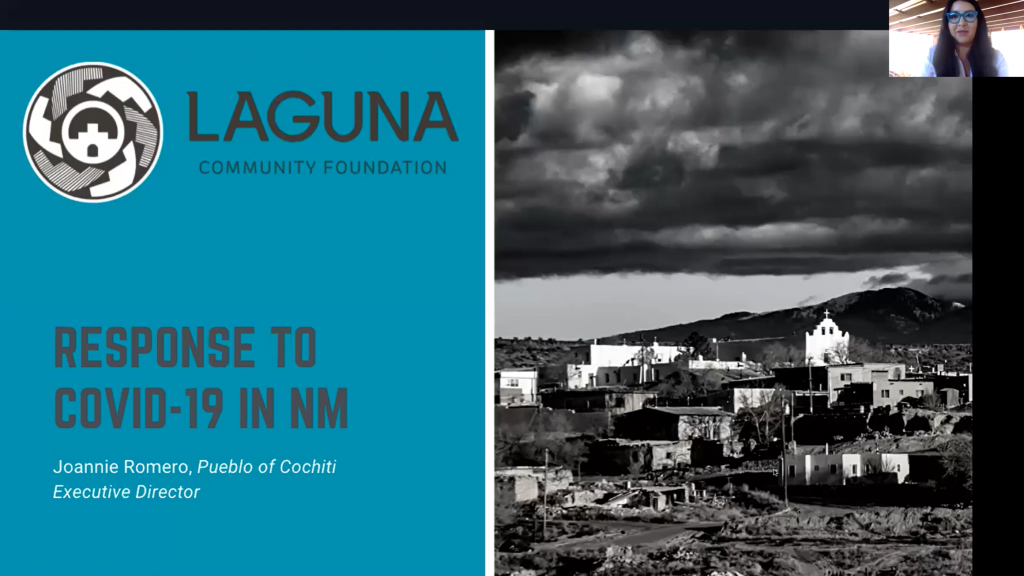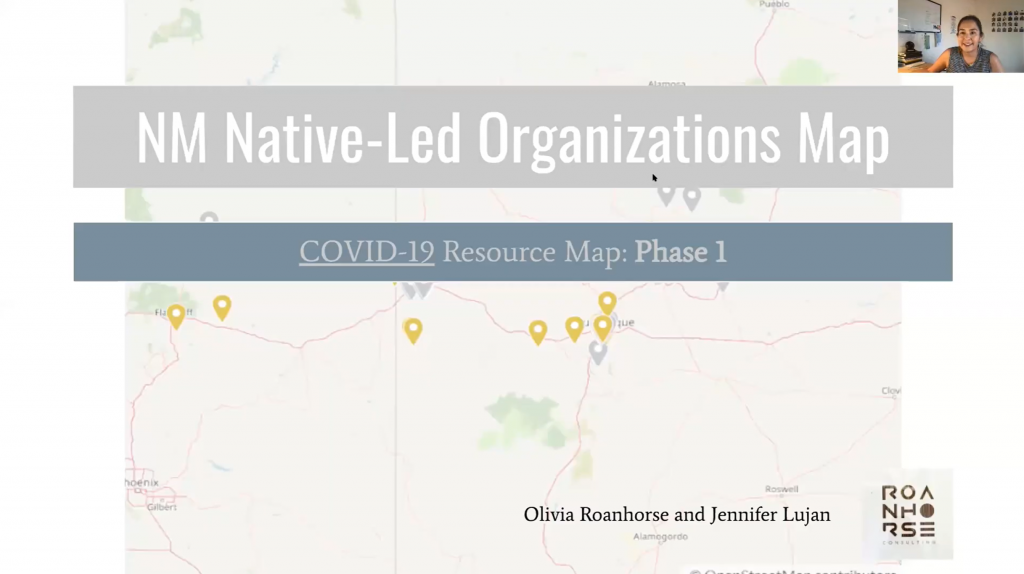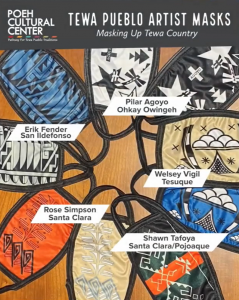Fight the Virus Campaign, Poeh Cultural Center, Pueblo of Pojoaque.
Guest post by Emily Santhanam, SAR Anne Ray intern 2020–2021
It’s easy to identify heartbreak in the past year and a half. The COVID-19 pandemic has challenged our world, upending the lives of individuals, families, and entire nations. When thoughtfully navigated, conversations around that trauma and pain can be healthy and growth oriented; yet too frequently, specific communities become written and rewritten into victim narratives. Locating hope amid loss—creativity in chaos—takes a special form of attention.
“Showing Our Strength: Resilience and Compassion in the Indigenous Southwest”—the final installment in our Senses of Place summer series—explored the growth and perseverance displayed in Native communities across the region. This panel, presented in partnership with the Thornburg Foundation, described how Native-led groups and individuals have come together to preserve and uplift their communities, ensuring their lifeways extend toward the future. Each speaker approached the conversation from a distinct perspective, reminding listeners of the wide range of tactics Native leaders have employed to confront the pandemic.

JoAnn Melchor, president and CEO of the New Mexico Foundation, and Governor Brian Vallo, Acoma Pueblo.
Governor Brian Vallo grounded his talk in the Pueblo of Acoma, using tribal language to rethink Western concepts of resilience, survival, hope, and prosperity. He spoke honestly about the devastating impacts the past year has had on families and personal identities within his community, referencing loss of life and postponed cultural ties. Still, these difficulties did not overshadow the small acts of faith offered by tribal members. As Governor Vallo said,
We did as much as we could within our own homes to maintain connection with the spirit
world—to maintain connection to culture, and to fulfill some of our inherent responsibilities.
Quiet forms of resistance and perseverance, while not always seen, hold power.
Looking to my Pueblo sisters who are on this panel, we were not only the ones that were behind the scenes sewing the masks. We’re on calls with our funders requesting support, we’re also the ones homeschooling our children. . . . We’re not only the breadwinners, but we’re the bread makers. . . . We’re the backbones of our communities.
Another strong female example for her community, Dr. Amanda Montoya serves as executive director of the Chamiza Foundation. Through creative programming like the Zuni Youth Enrichment Project, the Chamiza Foundation was able to deliver weekly, themed, all-inclusive educational kits to children. They hired and trained counselors to connect virtually with kids, while also offering emergency relief funding for artists, farmers, and elders across the twenty pueblos. Through this work, Dr. Montoya saw how the pandemic brought to light certain long-standing concerns in her community, like unreliable broadband connectivity. While a problem like this might not be solved in the course of the year, the Chamiza Foundation continues the work to address these needs.
The Native community has not emerged from the COVID-19 crisis without suffering and loss, pain and devastation that will echo across the landscape for years. Yet what the “Showing Our Strength” program has made clear is that resiliency, adaptation, and joy have emerged alongside that hurt. Native individuals and organizations have worked passionately to support and connect their communities. With Native arts and culture events slowly opening this summer, it’s good to know that in the Indigenous Southwest, hope grows from the inside out.




